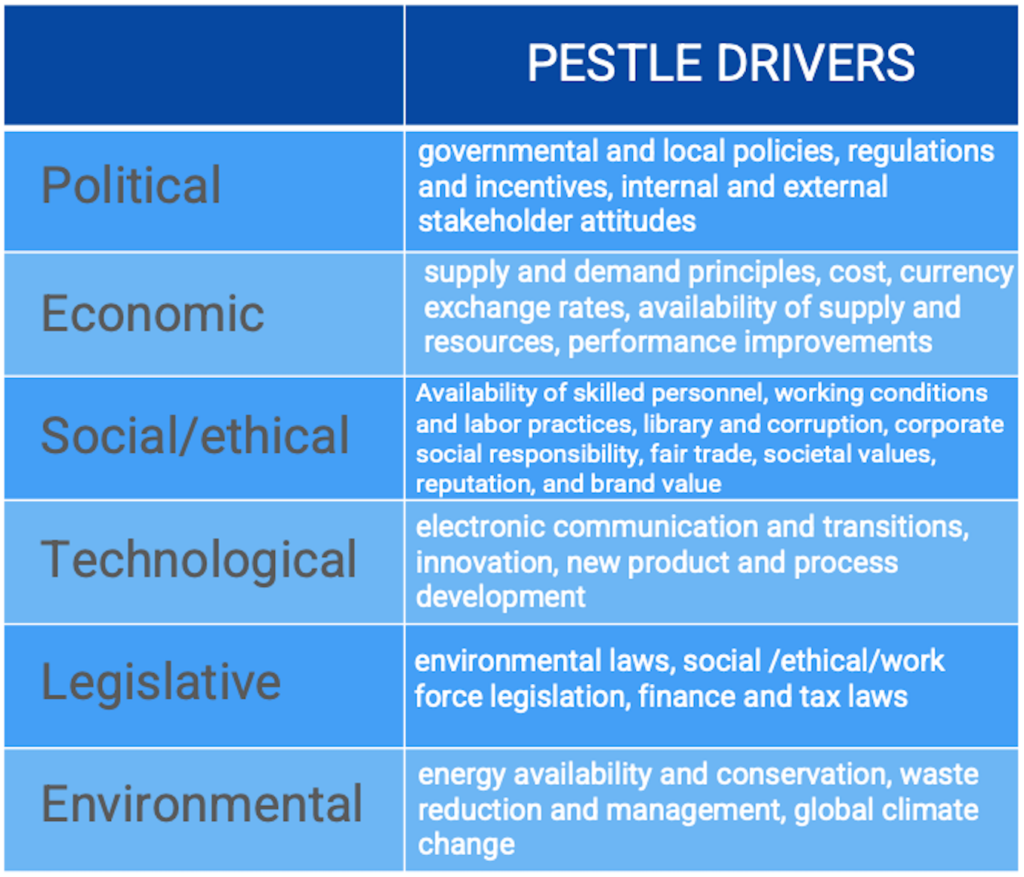In the past, some people viewed social and environmental concerns as obstacles to making a profit. Executives were mainly measured on financial performance and often disregarded issues like air and water pollution, child labor in third-world countries, climate change, worker’s rights, political turmoil, and more.
However, with the growing societal value of sustainability, organizations are now taking steps to ensure long-term operations by reducing waste, using fewer resources, producing reusable outputs, and cutting energy consumption.
Sustainability – An organizational focus on activities that provide present benefit without compromising the needs of future generations.
Customers are increasingly requesting that suppliers of goods and services prioritize sustainability in their supply chain and logistics operations. However, most companies only begin to adopt “green” practices as a response to current regulations or to comply with customer mandates and external pressure. It is important for sustainability to be incorporated into the corporate strategy and culture.
Environmentally Responsible Business – A firm that operates in such a way as to minimize detrimental impacts on society.
What Is the Incentive to Become Sustainable?
All companies, regardless of their industry, have a supply chain that can have an impact on society and the environment. There are many reasons why companies should adopt sustainable practices and behaviors. To identify the specific factors driving sustainability within an organization, a PESTEL analysis can be useful. This analysis, often used alongside a SWOT analysis, helps companies understand the external factors that affect their operations. The following table shows the factors evaluated during a PESTEL analysis and their corresponding sustainability drivers.


